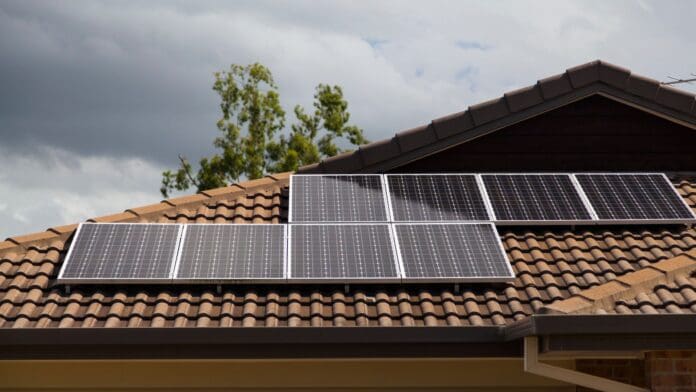Imagine waking up each morning knowing your electric vehicle is fully charged by the sun’s power, reducing your carbon footprint and lowering your energy bills simultaneously. Maximizing the efficiency of charging your EV with solar energy supports a sustainable lifestyle and leverages cutting-edge technology to optimize performance and reliability. By carefully assessing your solar potential, selecting the right equipment, designing an effective system layout, implementing smart charging strategies, and maintaining your setup, you can create a seamless and eco-friendly charging experience. This comprehensive guide will walk you through each step, providing practical insights and actionable tips to ensure your solar-powered EV charging system runs at its peak efficiency, regardless of your climate or driving habits.
Assess Your Solar Energy Potential and EV Charging Needs
According to Sun Valley Solar Solutions experts, maximizing the efficiency of your electric vehicle (EV) charging begins with a thorough assessment of your solar energy potential. Start by researching the average solar irradiance in your area using reliable solar maps or local meteorological data sources. Understanding the sunlight your location receives is crucial for determining how much solar power you can realistically harness. This data is the foundation for aligning your solar energy production with your EV’s charging requirements.
Next, calculate your EV’s daily energy consumption based on your typical driving patterns and battery capacity. This involves analyzing how many miles you drive daily and the energy needed to sustain that mileage. Creating a comparison table can help you visualize the relationship between your solar energy availability and your EV’s charging needs. For instance, in sunnier climates, you might find that your solar setup can fully cover your daily driving energy needs, whereas in areas with less sunshine, you may need to supplement with grid electricity.
Consider scenarios for different climates and driving habits to ensure a comprehensive understanding. For example, someone living in a region with abundant sunlight and low daily mileage may achieve higher charging efficiency than someone in a cloudy area with high daily driving distances. By tailoring your solar and charging strategy to your specific circumstances, you can optimize both energy savings and environmental impact, ensuring that your investment in solar energy delivers the maximum benefits for your EV ownership.
Selecting the Best Solar Panels and EV Charging Setup
When maximizing the efficiency of your EV charging with solar energy, choosing the right solar panels is crucial. Three primary types are to consider: monocrystalline, polycrystalline, and thin-film panels. Monocrystalline panels offer the highest efficiency and sleekest appearance, making them ideal for limited spaces. Polycrystalline panels are a more cost-effective option with slightly lower efficiency and are suitable for larger installations. While less efficient, thin-film panels are lightweight and flexible, perfect for unconventional setups. Understanding these differences helps you decide based on your specific needs and budget.
Equally important is selecting the right EV charging equipment that seamlessly integrates with your solar power system. Look for chargers that support smart charging, allowing you to optimize energy usage and reduce costs. Features like adjustable amperage and compatibility with solar inverters ensure that your charging station can efficiently utilize the power generated.
Design an Efficient Solar Charging System Layout
Creating a solar charging system that seamlessly integrates with your parking area starts with a well-designed layout. This ensures your solar panels capture the maximum sun exposure throughout the day, optimizing your EV charging capabilities. Here’s how to get it right:
- Assess Your Parking Space: Measure the available area to determine how many panels you can accommodate. Consider the orientation and angle to ensure panels receive ample sunlight.
- Optimize Panel Placement: Position panels where they are least likely to be shaded by trees, buildings, or other obstacles. Elevate panels if necessary to avoid common shading issues.
- Incorporate a Schematic: Draft a simple diagram illustrating the optimal setup. This visual guide helps identify the best spots for each panel and ensures efficient wiring and connectivity.
Avoiding pitfalls like inadequate spacing and incorrect angles can significantly enhance your system’s performance. Regularly inspect your setup to maintain unobstructed access to sunlight, ensuring your solar-powered EV charging remains effective and reliable.
Implement Smart Charging Strategies and Technology
Ready to take your EV charging game to the next level? Dive into innovative charging technologies that sync your charging times with your solar generation and overall energy usage. By setting up charging schedules that align with your peak solar production hours, you’re not just saving money but making your energy usage brighter.
Here are some killer smart charging features that can revolutionize your energy optimization:
- Dynamic Scheduling: Automatically adjusts charging times based on real-time solar output.
- Load Management: Balances energy distribution to prevent overloading your system.
- Remote Monitoring: Keep an eye on your charging status from anywhere using your smartphone.
- Predictive Analytics: Uses data to forecast and optimize future charging needs.
Think about integrating top-notch smart chargers like the Tesla Wall Connector or the ChargePoint Home Flex, paired with intuitive software solutions such as SolarEdge or Enphase. These tools not only automate your charging process but also enhance charging efficiency, ensuring you get the most out of your solar energy while keeping your EV ready to roll whenever you are.
Monitor Performance and Maintain Your Solar-EV Charging System
Keeping a close eye on your solar-EV charging system ensures every component operates at peak performance. Regular monitoring helps detect inefficiencies early, preventing costly repairs and maximizing energy savings. Utilize advanced tracking tools to oversee your solar energy production and EV charging performance in real time. These platforms offer intuitive dashboards that make identifying trends and promptly addressing issues easy.
Knowing how to troubleshoot issues can save you time and money. Common problems include inconsistent charging rates or unexpected drops in solar output. Start by checking your system logs through your monitoring tools to identify anomalies. If the problem persists, it might be time to consult a professional technician to handle more complex repairs. Regular upkeep and proactive monitoring ensure your investment in solar-powered EV charging remains efficient and reliable.






